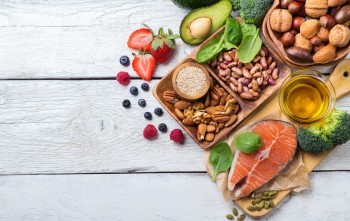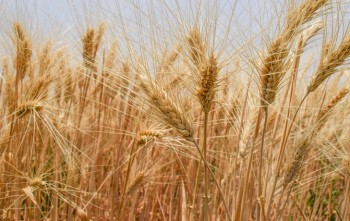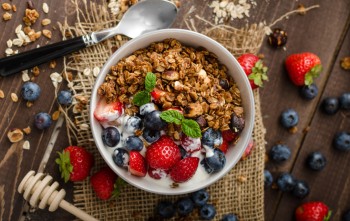Success in Breastfeeding with a Low Glycemic Index Diet

Milla Nurjanati S,Gz
Nutritionist
“Every breastfeeding moment is a magical moment that builds a deep connection, providing nourishment to the body and soul”.
Breastfeeding is the process of exclusively providing breast milk without supplementation of other foods or drinks, except medication, for the first 6 months. Scientific evidence indicates that exclusively breastfeeding can meet the nutritional needs of infants for growth and development. After 6 months, mothers continue to breastfeed alongside introducing complementary foods because 65% of a baby's energy needs at 6-8 months are still met by breast milk [1].
Not only does breastfeeding benefit the baby's health, but it also has advantages for the mother, such as reducing the risk of endometrial cancer by 11%, serving as natural contraception because the hormones produced during breastfeeding can suppress ovulation, and lowering the risk of heart disease and diabetes [2].
Knowing the benefits of breastfeeding, surely we become aware of the importance of exclusive breastfeeding. However, it is not an easy thing to do, especially considering the unpredictable sleep patterns of babies. Mothers often have to wake up in the middle of the night and early morning to breastfeed, especially for working mothers who have to get up early to prepare for work. Therefore, the mother's physical fitness is crucial for the success of breastfeeding, and one way to achieve this is by ensuring the right nutritional intake.
What is Low Glycemic Index?
The glycemic index (GI) is an indicator of how quickly or slowly food is absorbed into the bloodstream. The GI of a food is measured on a scale of 0–100. The low glycemic index category is less than 55. The higher the GI number, the faster the food can increase blood sugar levels.
What are The Benefits of Providing Low Glycemic Index Foods for Breastfeeding Mothers?
In addition to meeting the balanced nutritional needs of macro and micronutrients, mothers should choose the right foods for good quality breast milk. One way is by selecting foods with a low glycemic index (GI), and here are the benefits:
1. Preventing Diabetes Risk
Low glycemic index foods stabilize blood sugar, helping prevent diseases such as gestational diabetes or type 2 diabetes that may develop after pregnancy.
2. Preventing Excessive Hunger
Breastfeeding requires extra calories compared to normal daily calorie needs. Meeting the extra calorie needs of 330 kcal in the first 6 months and 400 kcal in the second 6 months by consuming low-GI foods can release energy gradually, avoiding excessive hunger.
3. Maintaining Mother's Mood
Low-GI foods prevent significant fluctuations in blood sugar, maintaining an ideal mood for mothers to carry out their activities.
4. Maintaining Mother's Fitness
Stable blood sugar also maintains the health and fitness of mothers for the success of breastfeeding.
5. Maintaining Weight
A low glycemic index (GI) diet helps in maintaining weight because low-GI foods tend to cause a slower and more stable increase in blood glucose, controlling hunger and reducing the desire to overeat.
Implementing a Low Glycemic Index Diet for Breastfeeding Success
Of course mothers can also incorporate a variety of low-GI foods into their daily menu, such as:
- Breakfast: YAVA Granola with Cashew + Skim Milk + Sliced Fruit
The rolled oats in YAVA products contain beta-glucan, a fiber that increases prolactin hormone production for breastfeeding. Furthermore, rolled oats are also rich in vitamins and minerals such as iron, zinc, manganese, and calcium [4] [5].
Low-fat milk, such as skim milk, contains Vitamin B and D, protein, and calcium that are essential for the formation of a baby's bones and muscles [5]. By adding sliced fruits like avocado not only provide extra vitamins and minerals but also contain healthy fats to help balance hormones.
- Snack: YAVA Wild Harvested Cashew + Greek Yogurt
The advantage of Wild Harvested Cashew compared to commercially grown cashew varieties is its higher nutritional quality and its richer taste. Cashews contain numerous vitamins and minerals that can enhance the quality of breast milk. Additionally, they are rich in zinc, calcium, iron, folate, and vitamin K. The folate in cashews aids in the production of blood cells and is also crucial for the health of the baby [6] [7].
Greek yogurt is a snack that serves as a good source of protein and contains sufficient calcium for the needs of breastfeeding mothers.
- Main Meal: Red Rice + Fish or Other Low-Fat Protein + Green Vegetables
Red rice contains fiber, protein, and carbohydrates, and has a lower glycemic index compared to white rice. Brown rice also contains protein, fat, vitamin B1, vitamin B2, vitamin B3, vitamin B5, vitamin B6, folate, calcium, iron, magnesium, manganese, phosphorus, potassium, sodium, and zinc. These nutritional contents are beneficial for the body, especially for pregnant and breastfeeding mothers, as well as infants and growing children.
Fish has many benefits, one of which is increasing the quantity and quality of breast milk. For example, a serving of salmon contains minerals, vitamins (B1, B3, B6, B12), protein, and vitamin D. Additionally, the omega-3 fatty acids in anchovies function to reduce blood pressure and inflammation in the body of breastfeeding mothers, contributing to relaxation and increased milk production [6].
Green vegetables such as spinach, broccoli, and water spinach contain a lot of iron and calcium, which can help increase breast milk production. They also contain vitamin C, which aids in nutrient absorption. Furthermore, vegetables like katuk leaves contain phytosterol compounds that can stimulate and facilitate milk production. Katuk leaves also contain steroids and polyphenols that can increase prolactin levels, the hormone that stimulates milk production. Higher prolactin levels enhance, expedite, and facilitate milk production [6].
Discover YAVA Granola Cashew with delightful flavor options such as Chocolate Banana, Chocolate Vanilla, Coconut Banana, Rosella Cinnamon, and Tropical Fruits; and explore YAVA Wild Harvested Cashew products featuring flavors like Cacao, Chili Lime, Sea Salt, Roasted, Garlic Pepper, and Sweet Spicy, available at your favorite online stores!
Sources:
[1] Dr. Tiangsa. 2022. Exclusive Breastfeeding. Ministry of Health Indonesia.
[2] Astasari. 2022. 4 Benefits of Breastfeeding for Mother's Health. Ministry of Health Indonesia.
[3] Ministry of Health. Low Glycemic Index Diet.
[4] Donna. 2020. Can Eating Oatmeal Help You Make More Breast Milk?.
[5] Adda et al. 2023. Breastfeeding Diet 101: What to Eat While Breastfeeding.
[6] Danu. 2023. Consume These Foods for Abundant Breast Milk. Ministry of Health Indonesia.
[7] Shevi. 2023. Should I Eat Nuts While Breastfeeding?. In Shape Mummy Article.















